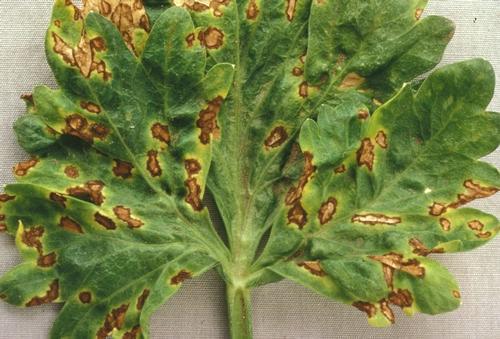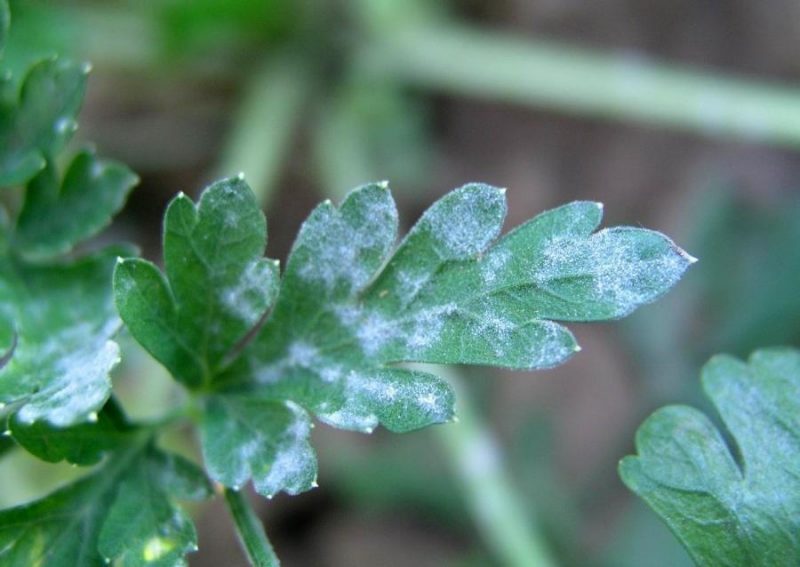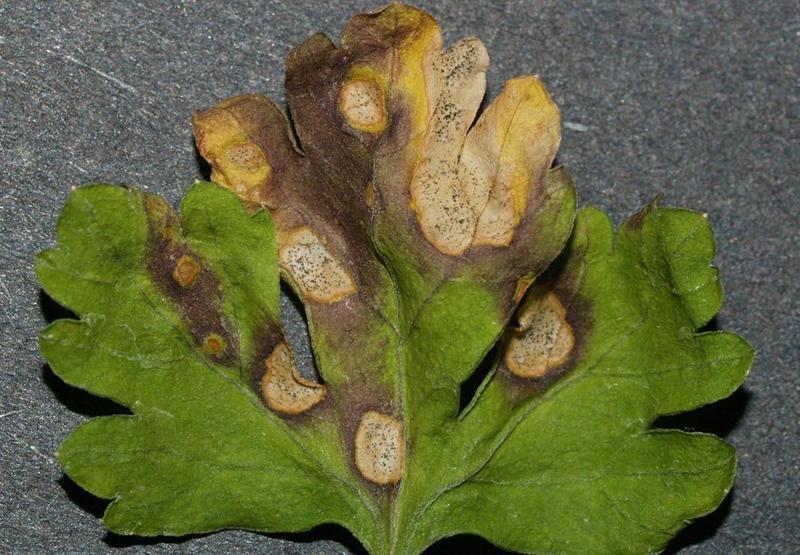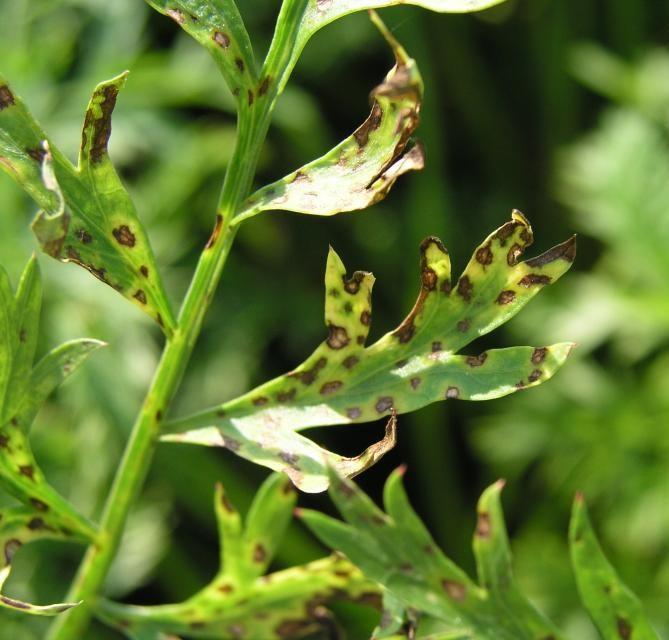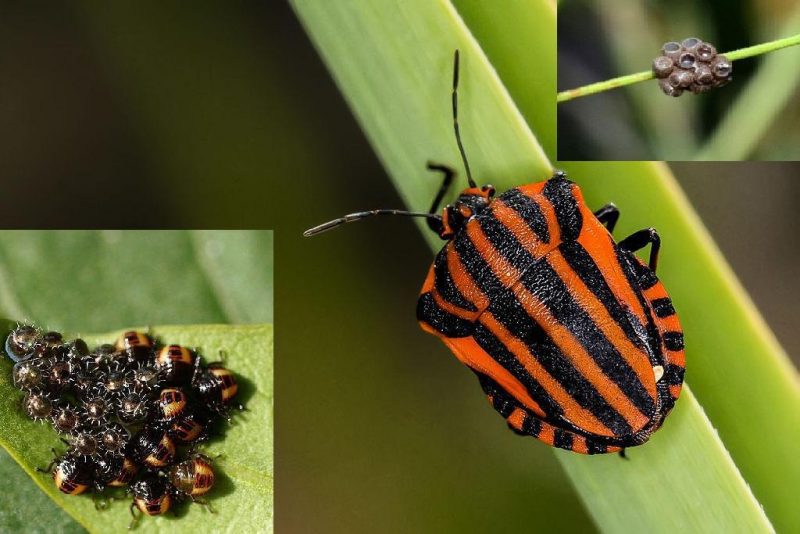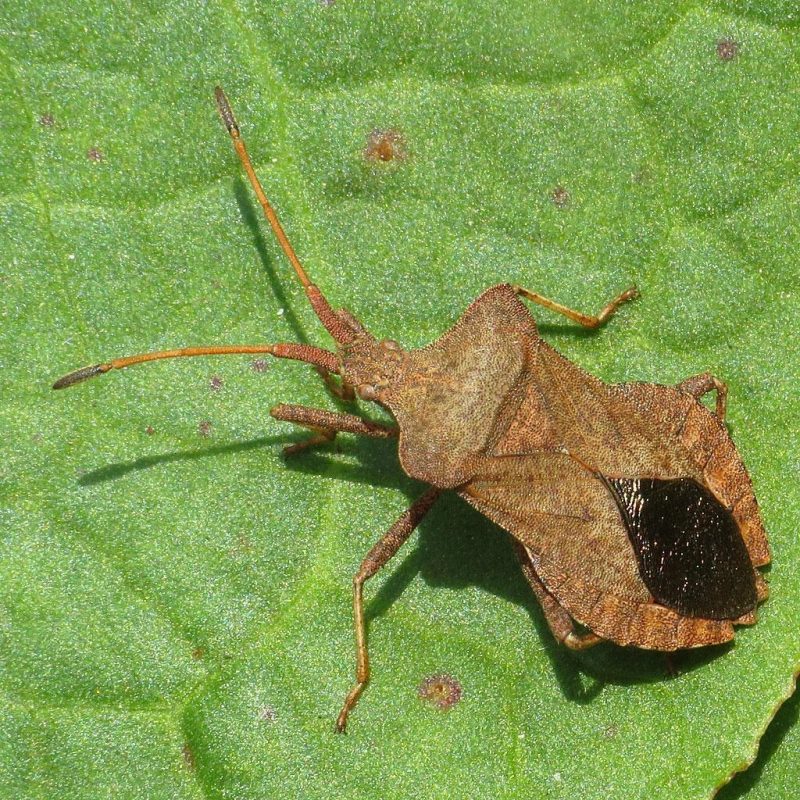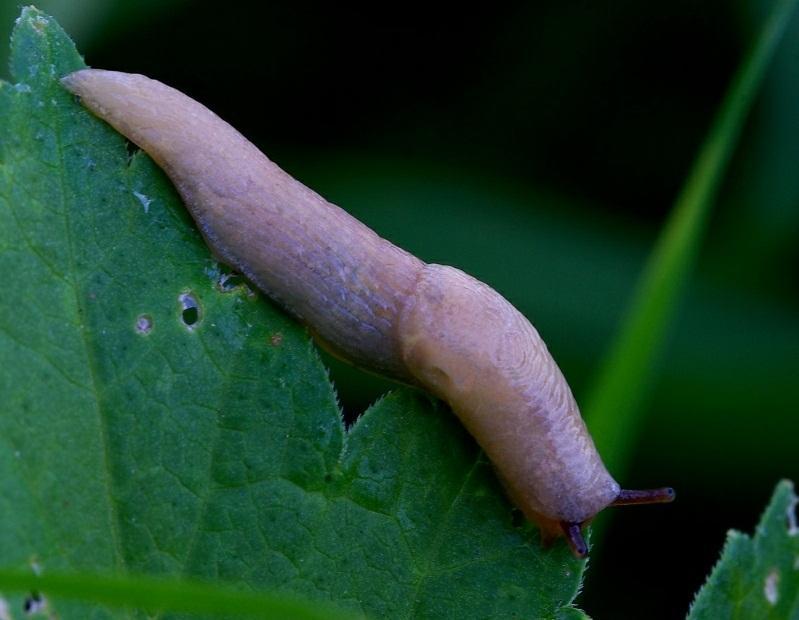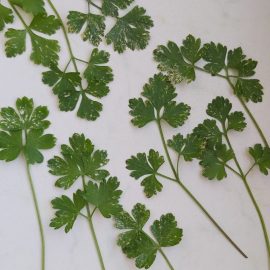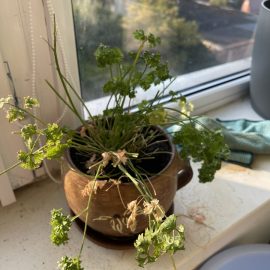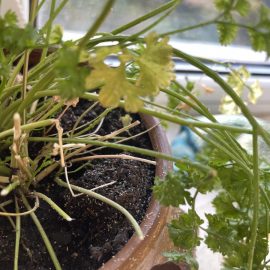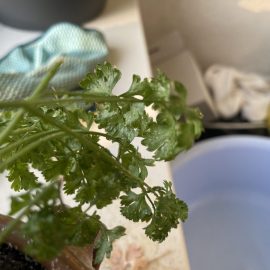Parsley, treatments against pests and diseases
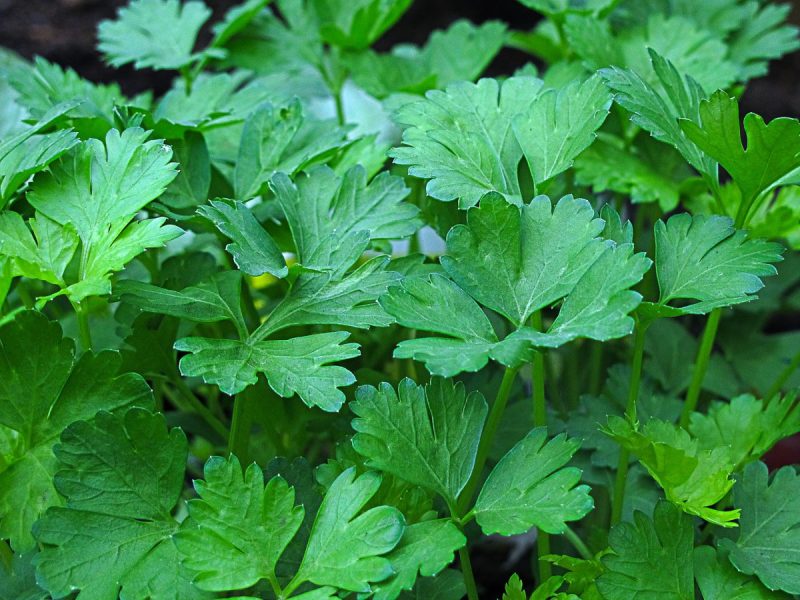
Parsley (Petroselinum crispum) is part of the Apiaceae family (Umbelliferae) and is one of the most popular culinary plants in the world. It is cultivated for its aromatic leaves, but also for its nutrient-rich root. It can be used both fresh and frozen or dehydrated. Parsley plants are also used for medicinal purposes. Parsley is native to southern Europe and was first cultivated 2000 years ago. It was originally used as a medicinal plant before being consumed as food. Although it is still uncertain when and where parsley began to be consumed as a spice, historians assume that this would have happened in the Middle Ages in Europe. The parsley crop can be affected by pests and diseases, against which it’s important to apply the right treatments.
The main diseases of parsley
Bacteriosis
Bacterial blight of carrot (Xanthomonas campestris pv. carotae)
Symptoms include yellowing and dwarfing of the plant. The disease progresses and irregular, brownish spots appear on the leaves. Elongated brownish spots appear on the leaves’ petiole. In conditions of high atmospheric humidity, a yellowish, mucilaginous mass appears on the affected areas, representing the bacterial exudate. The disease is transmitted by vectors (water, wind, animals, people, tools, etc.) that carry the bacterial ooze to healthy plants.
Prevention and control measures:
- using healthy parsley seeds from safe sources;
- practicing a rational crop rotation;
- parsley treatments with specific fungicides.
Mycosis
Powdery mildew (Erysiphe umbelliferarum)
The disease is favored by high temperatures and drought. The first symptom is the appearance of white, powdery spots (mycelium) on the leaf surface. Affected leaves turn yellow and begin to wilt. The disease progresses and the white spots on the leaf surface turn greyish. In case of a severe attack, the tissues under the dusty layer dry out.
Prevention and control measures:
- removing affected plants from the crop;
- using healthy parsley seeds;
- destroying plant debris after harvest;
- treatments with specific fungicides.
Recommended products
-
You can find products on a different store
Change Store -
You can find products on a different store
Change Store -
You can find products on a different store
Change Store -
You can find products on a different store
Change Store -
You can find products on a different store
Change Store -
You can find products on a different store
Change Store -
You can find products on a different store
Change Store -
You can find products on a different store
Change Store -
You can find products on a different store
Change Store -
You can find products on a different store
Change Store -
You can find products on a different store
Change Store -
You can find products on a different store
Change Store -
You can find products on a different store
Change Store -
You can find products on a different store
Change Store -
You can find products on a different store
Change Store -
You can find products on a different store
Change Store -
You can find products on a different store
Change Store -
You can find products on a different store
Change Store -
You can find products on a different store
Change Store -
You can find products on a different store
Change Store -
You can find products on a different store
Change Store -
You can find products on a different store
Change Store -
You can find products on a different store
Change Store -
You can find products on a different store
Change Store
Septoria leaf spot (Septoria petroselini)
Irregularly shaped, greyish-yellow spots appear on parsley leaves, surrounded by a brown edge. The spots evolve, and become whitish. Small black dots appear inside the spots, representing the fungus fructifications. Heavily attacked leaves turn yellow and dry out. High temperatures and high atmospheric humidity favor the appearance of the disease. The disease is transmitted by the spores of the fungus and resists during winter in plant debris and infested seed.
Prevention and control measures:
- removing affected plants from the crop;
- using healthy parsley seeds;
- destroying plant debris after harvest;
- performing treatments with specific fungicides.
Carrot leaf blight (Alternaria dauci)
Small brown spots appear on the edge of the leaves, surrounded by a yellow area. In case of a severe attack, the leaves become completely dry. As a result, the crop has a burnt appearance. Initially, the fungus attacks mature leaves and then spreads to young leaves. Eventually, the foliage of the plant can be destroyed.
Prevention and control measures:
- destroying affected plant debris;
- parsley treatments with specific fungicides.
Recommended products
-
You can find products on a different store
Change Store -
You can find products on a different store
Change Store -
You can find products on a different store
Change Store -
You can find products on a different store
Change Store -
You can find products on a different store
Change Store -
You can find products on a different store
Change Store -
You can find products on a different store
Change Store -
You can find products on a different store
Change Store -
You can find products on a different store
Change Store -
You can find products on a different store
Change Store -
You can find products on a different store
Change Store -
You can find products on a different store
Change Store -
You can find products on a different store
Change Store -
You can find products on a different store
Change Store -
You can find products on a different store
Change Store -
You can find products on a different store
Change Store -
You can find products on a different store
Change Store -
You can find products on a different store
Change Store -
You can find products on a different store
Change Store -
You can find products on a different store
Change Store -
You can find products on a different store
Change Store -
You can find products on a different store
Change Store -
You can find products on a different store
Change Store -
You can find products on a different store
Change Store
The main pests of parsley
Aphids
They are polyphagous species that migrate from one plant to another or from one species to another. They grow on spontaneous flora and then move on to cultivated species. Aphids occur as a colony on the underside of leaves, flowers, or inflorescences and young shoots. Insects sting and suck the sap, causing stress to the plant. In case of a severe attack, it causes the death of the plant.
Control methods:
- using sticky traps;
- performing treatments with specific insecticides.
Recommended products
-
You can find products on a different store
Change Store -
You can find products on a different store
Change Store -
You can find products on a different store
Change Store -
You can find products on a different store
Change Store -
You can find products on a different store
Change Store -
You can find products on a different store
Change Store -
You can find products on a different store
Change Store -
You can find products on a different store
Change Store -
You can find products on a different store
Change Store -
You can find products on a different store
Change Store -
You can find products on a different store
Change Store -
You can find products on a different store
Change Store -
You can find products on a different store
Change Store -
You can find products on a different store
Change Store -
You can find products on a different store
Change Store -
You can find products on a different store
Change Store -
You can find products on a different store
Change Store -
You can find products on a different store
Change Store -
You can find products on a different store
Change Store -
You can find products on a different store
Change Store -
You can find products on a different store
Change Store -
You can find products on a different store
Change Store -
You can find products on a different store
Change Store -
You can find products on a different store
Change Store
Striped bug (Graphosoma lineatum)
It is a univoltine species, overwintering as an adult in the forest vegetation, in orchards, or on plant debris on the soil surface. Larvae and adults attack plants, destroying flowering shoots, causing flower abortion, or inhibiting plant growth.
Prevention and control methods:
- balanced fertilization;
- weed control;
- parsley treatments with specific insecticides.
Dock bug (Coreus marginatus)
It has one generation per year and overwinters as an adult in the field or in the woods. It is a polyphagous species and can attack all plant organs. In case of a severe attack, it causes the seeds to dry up, the leaves to dry out and the plant to stop growing.
Prevention and control methods:
- balanced fertilization;
- weed control;
- performing treatments with specific insecticides.
Slug (Deroceras agreste)
Slug is a polyphagous species that attacks many vegetable plants, flowers, vines, etc. It causes great damage to vegetable crops. It perforates leaves, gnaws petioles, and can attack the crown area.
Control methods:
- specific molluscicide treatments.
Recommended products
-
You can find products on a different store
Change Store -
You can find products on a different store
Change Store -
You can find products on a different store
Change Store -
You can find products on a different store
Change Store -
You can find products on a different store
Change Store -
You can find products on a different store
Change Store -
You can find products on a different store
Change Store -
You can find products on a different store
Change Store -
You can find products on a different store
Change Store -
You can find products on a different store
Change Store -
You can find products on a different store
Change Store -
You can find products on a different store
Change Store -
You can find products on a different store
Change Store -
You can find products on a different store
Change Store -
You can find products on a different store
Change Store -
You can find products on a different store
Change Store -
You can find products on a different store
Change Store -
You can find products on a different store
Change Store -
You can find products on a different store
Change Store -
You can find products on a different store
Change Store -
You can find products on a different store
Change Store -
You can find products on a different store
Change Store -
You can find products on a different store
Change Store -
You can find products on a different store
Change Store














































































































































































































































































































































































































































